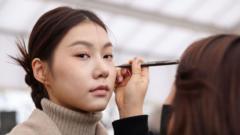As South Korea’s beauty industry flourishes globally, US President Donald Trump's recent 15% import tax on South Korean goods is creating ripples. K-beauty, which has seen sales soar to an impressive $1.7 billion in the US in 2024—surging over 50% from the previous year—might face tougher times. Consumers like Pearl Mak, a graphic designer who favors K-beauty for its gentler ingredients, are willing to pay more, but they are also strategizing on their purchases amid uncertainty.
Retailers like Santé Brand and Senti Senti have already noticed a rise in orders; shoppers are urging them to stock up before prices rise further. Major K-beauty brands may navigate the tariffs better, thanks to their higher profit margins, while smaller companies could face significant struggles.
Despite anticipated price increases, the global allure of K-beauty—thanks to the wave of interest in South Korean culture—means that many fans might still opt to stay loyal. However, it remains to be seen if they will adjust their purchasing habits given the changing landscape of product pricing. The ongoing developments in trade policies could very well shape the future of K-beauty's presence in the US market.
Retailers like Santé Brand and Senti Senti have already noticed a rise in orders; shoppers are urging them to stock up before prices rise further. Major K-beauty brands may navigate the tariffs better, thanks to their higher profit margins, while smaller companies could face significant struggles.
Despite anticipated price increases, the global allure of K-beauty—thanks to the wave of interest in South Korean culture—means that many fans might still opt to stay loyal. However, it remains to be seen if they will adjust their purchasing habits given the changing landscape of product pricing. The ongoing developments in trade policies could very well shape the future of K-beauty's presence in the US market.




















